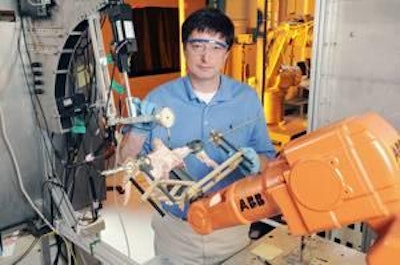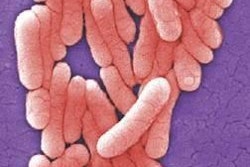
Researchers at the Georgia Tech Research Institute have developed a prototype system that uses advanced imaging technology and a robotic cutting arm to automatically debone chicken and other poultry products.
The Intelligent Cutting and Deboning System employs a 3-D vision system that determines where to cut a particular bird. The device automatically performs precision cuts that optimize yield, while also reducing the risk of bone fragments in the finished product. “Each bird is unique in its size and shape," said Gary McMurray, chief of the institute's food processing technology division. "So we have developed the sensing and actuation needed to allow an automated deboning system to adapt to the individual bird, as opposed to forcing the bird to conform to the machine.”
McMurray said he expects the intelligent deboning system to match or exceed the efficiency of the manual process. Testing of the deboning prototype system, including cutting experiments, has confirmed the system’s ability to recognize bone during a cut and to avoid bone chips — thus demonstrating the validity of the institute's approach. “There are some very major factors in play in this project,” said McMurray. “Our automated deboning technology can promote food safety, since bone chips are a hazard in boneless breast fillets. But it can also increase yield, which is significant because every 1 percent loss of breast meat represents about $2.5 million to each of Georgia’s 20 poultry processing plants.”

















